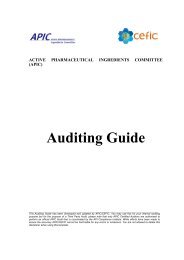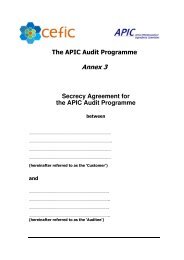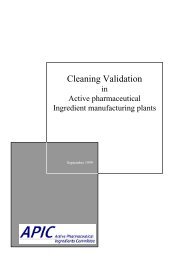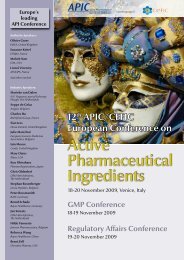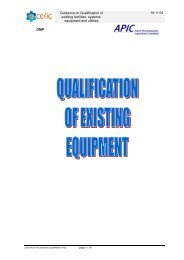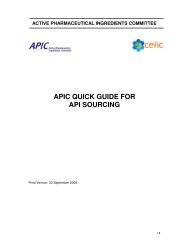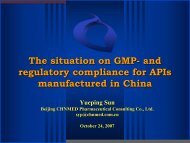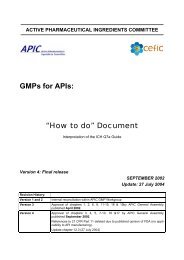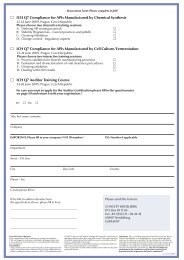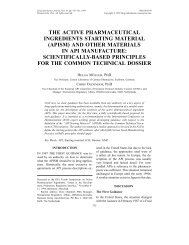Quality Management System for Active pharmaceutical
Quality Management System for Active pharmaceutical
Quality Management System for Active pharmaceutical
You also want an ePaper? Increase the reach of your titles
YUMPU automatically turns print PDFs into web optimized ePapers that Google loves.
<strong>Quality</strong> <strong>Management</strong> <strong>System</strong> - integrating GMP into ISOB.3 CleaningB.3.1Buildings should be maintained in a clean condition and cleaning procedures shouldbe documented and readily available.B.3.2Equipment should have product contact surfaces that are easily cleanable.Connections between various pieces of equipment should also be easily cleanable.Items that are difficult to clean in situ should be dismantled whenever there is apotential <strong>for</strong> contamination.B.3.3There should be written procedures describing the cleaning of equipment includingrelated equipment such as heat exchangers or connections. There should be a recordthat the cleaning activity has been completed and the cleanliness status of theequipment should be identifiable. Where appropriate, the cleaning procedures shouldbe validated (see Annex C).B.3.4Cleaned equipment should be protected from re-contamination. It should bechecked <strong>for</strong> cleanliness be<strong>for</strong>e use and the result of this check should be recorded.B.3.5Whilst clean-up between successive batches of the same API is not mandatory,equipment should be cleaned at appropriate intervals when the risk of contaminationfrom microbiological growth or non-acceptable material build-up becomes too great.B.3.6Sampling tools and containers should be maintained in a clean condition so as toprevent contamination of both the sample taken and the material being sampled.B.4 UtilitiesB.4.1<strong>Quality</strong> critical utilities (e.g. water, steam, air, nitrogen) should be validated andfrequently monitored. Action should be taken when defined warning levels arereached.B.4.2Chemical and microbiological specifications should be established to control waterquality (e.g. potable water; heated water; endotoxin-free water; steam). Waterquality should be monitored during quality critical manufacturing steps.B.4.3Pipework and valves should be designed to minimise the risk of contamination.Permanent pipework should be labelled with the name of the material therein and thedirection of flow, and should be located so that rusting, surface condensation, orleakage will not lead to contamination.56



